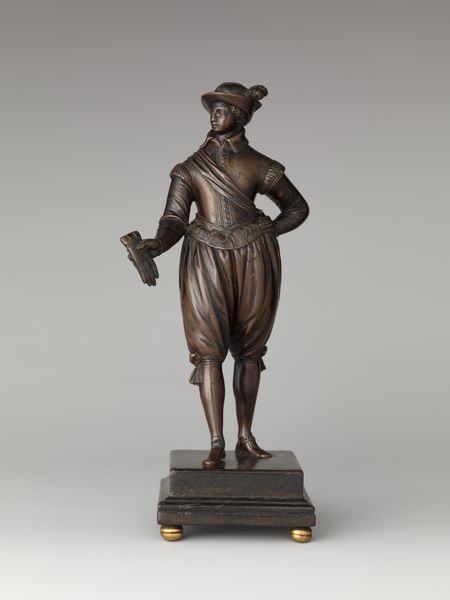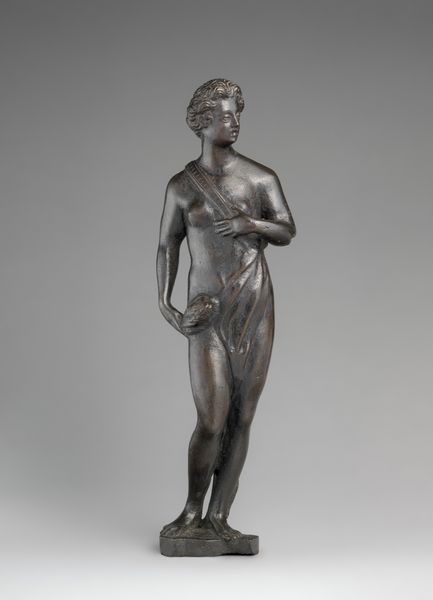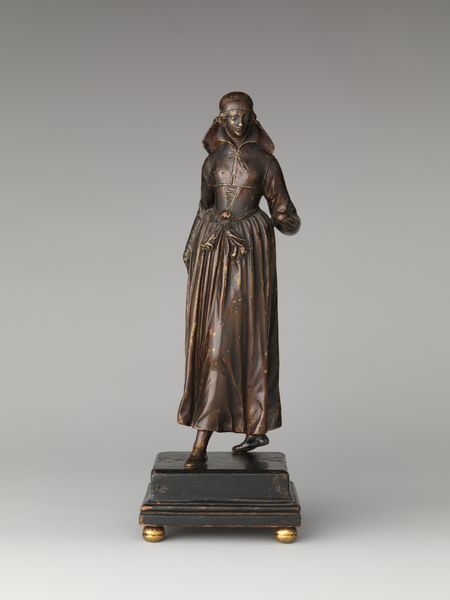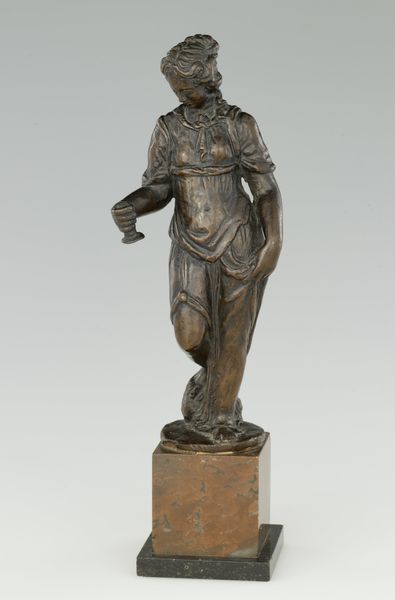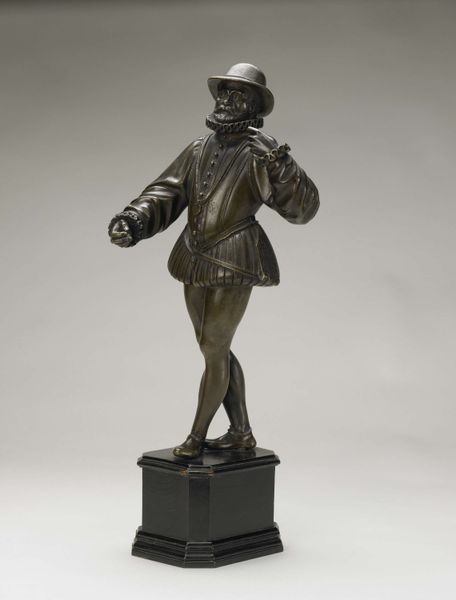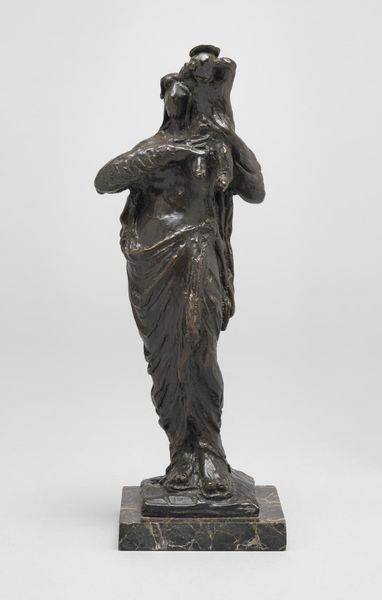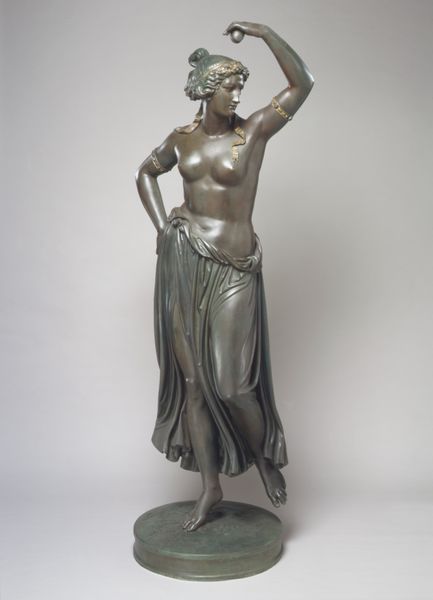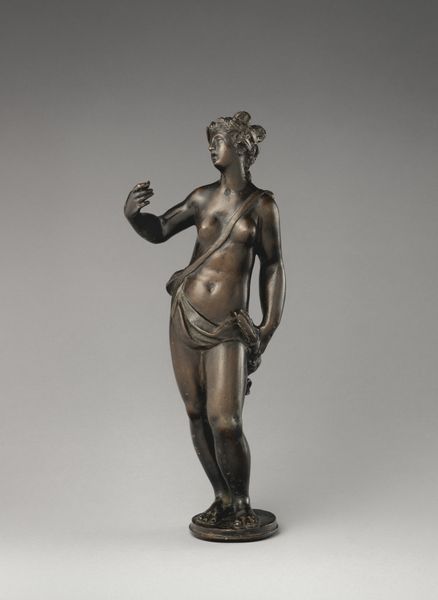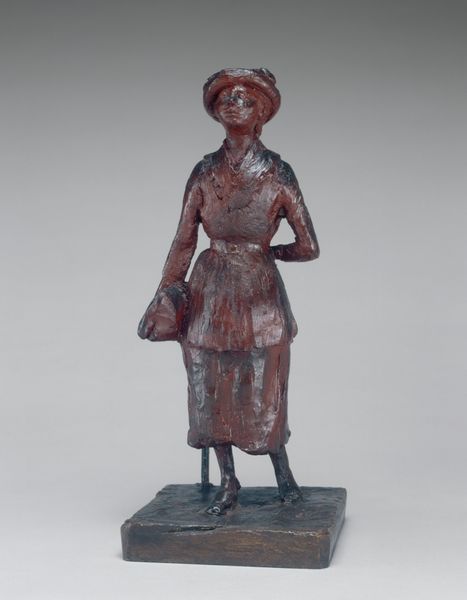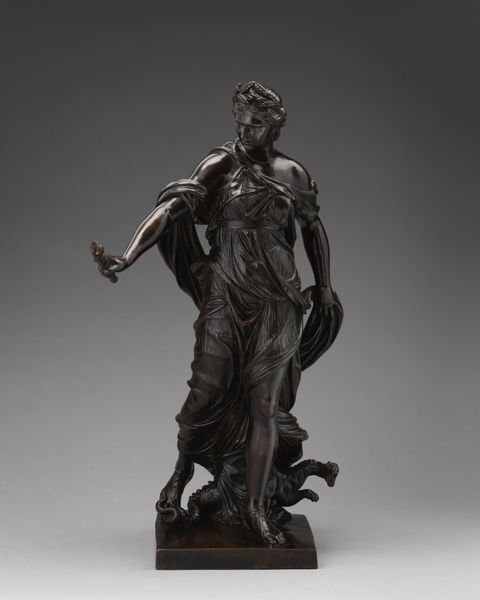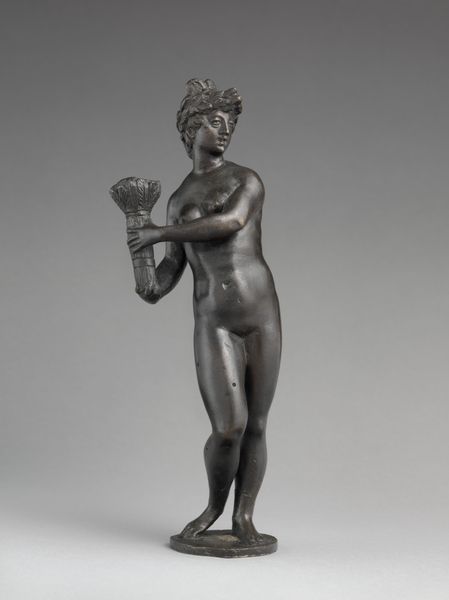
bronze, sculpture
#
portrait
#
sculpture
#
bronze
#
mannerism
#
figuration
#
sculpture
#
statue
Dimensions: height 22 cm, width 11 cm, depth 8.5 cm, height 25.5 cm
Copyright: Rijks Museum: Open Domain
Editor: We’re looking at "Young Lord and Young Woman," a bronze sculpture created by Barthélémy Prieur around 1600 to 1611. It has a kind of poised, self-assured quality. I'm curious, how do you read the social context of a piece like this? Curator: Well, its small scale tells us something right away: bronze sculptures like this were often made for private collections, a sign of wealth and status. How do you think the subjects of these sculptures would have wanted to be perceived? Editor: I’d guess powerful and elegant? They look ready to receive an audience. Is it accurate to say bronze sculptures might present a certain aspiration? Curator: Precisely. It's interesting to consider what ideals were being circulated and reinforced in elite circles at the time. It raises questions about patronage. Who commissioned Prieur and what image did they hope to project? Think about the cost of bronze and the skill required. The statue embodies privilege but the message must have political reverberations. Does the confident pose resonate with other contemporary images? Editor: Now that you mention it, yes, that pose is often adopted in other regal contexts of the period. Also, it's interesting how bronze can immortalize the elite for posterity, dictating how history remembers them. Curator: Indeed, and think about where this sculpture was likely displayed— perhaps a cabinet of curiosities or a private study— spaces intended for contemplation and conversation among a select few. Considering that public art fulfilled a very different set of social functions. Editor: This definitely makes me reconsider sculpture's role in actively reinforcing certain ideals and power dynamics within 17th century French society, both explicitly and implicitly. Curator: And I am also considering new research that is contextualizing public and private art production as very different circuits that served distinct socio-political purposes.
Comments
rijksmuseum about 2 years ago
⋮
Alongside all manner of classical and mythological subjects, the French court sculptor Prieur also made a few figurines representing daily life. With this elegant couple he played with the unequal standing of the figures: the dashing, urban lord versus the simple country lass holding a basket and an apple. The electric erotic tension between them can be read from their gestures and attributes – gloves and an apple.
Join the conversation
Join millions of artists and users on Artera today and experience the ultimate creative platform.
